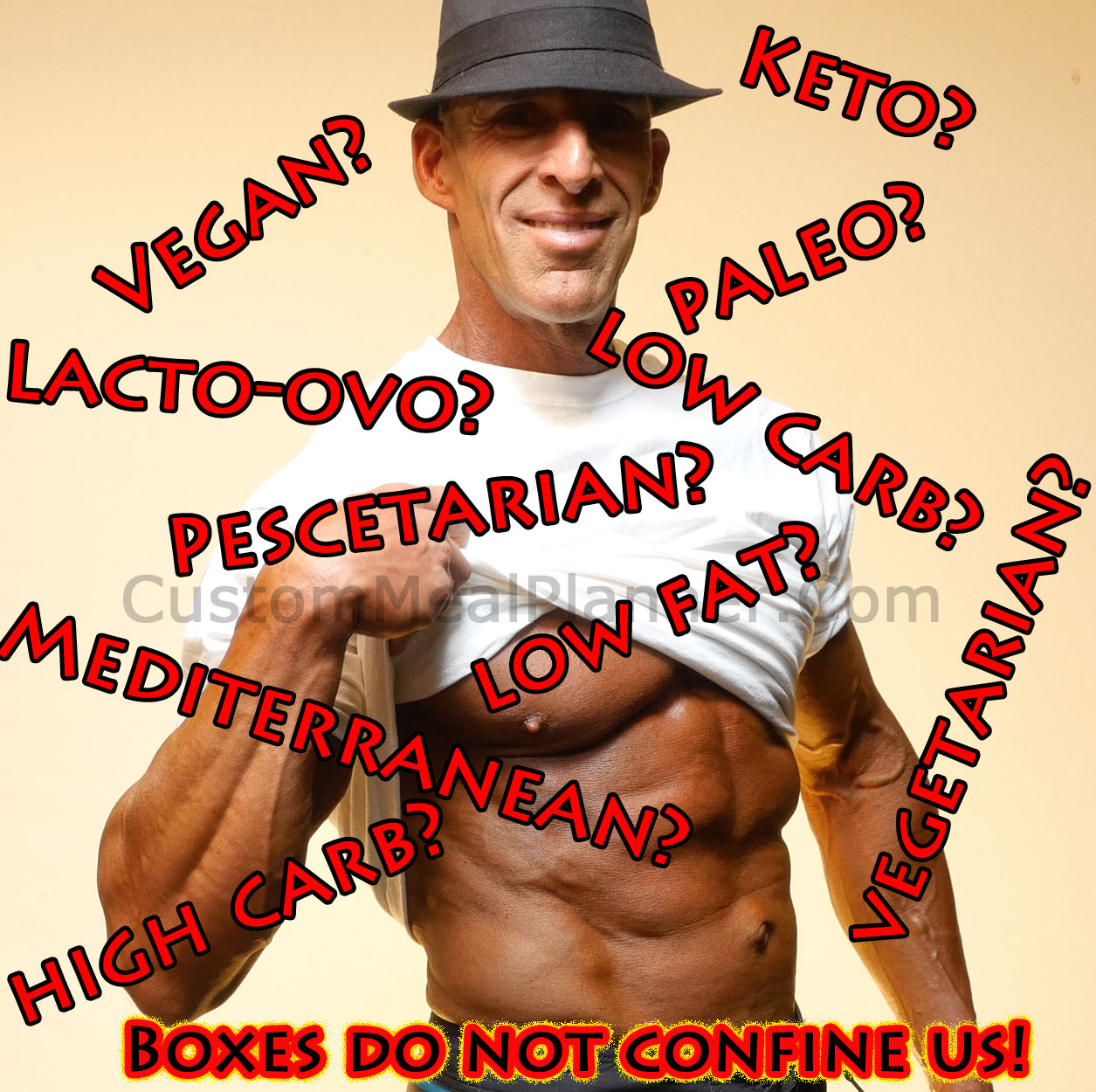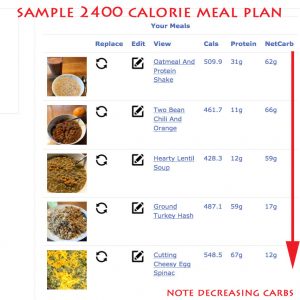If you are a serious lifter or athlete, this happens to you all the time. People want to know about your nutrition and they invariably ask:
What are you?
To them, the world fits into clean little boxes. They want a simple answer. Are you low carb, low fat, keto, vegan, vegetarian, or paleo? Better yet, they hope you have some miracle diet you can share with them that allows them to eat whatever they want and still lose fat. When I am asked this question, I usually say “pseudo-vegetarian” because I see no reason for my nutritional plan to be put into a little box designed by someone who knows nothing about me or my goals.
Bodybuilders do not need to be confined by little boxes!
A great example of this is my carb tapering meal plan. It defies all attempts at classification, but its awesome! Carb tapering means tapering off your carb consumption as the day progresses. The rationale is that carbs are for energy and you need energy when you are going to be physically very active which is during the day and during your intense cardio sessions. Here is an example of a carb tapering meal plan with 5 meals, note how the carbs decrease later in the day:
The first meal is medium carb, the second and third are vegan meals, the fourth is low carb and the last is keto. Mix and match is actually a really good strategy as this meal plan illustrates. The low carb and keto meals at the end of the day allow you to have very high carb plant based meals early in the day when you need the energy.
Mix and match nutritional styles
Nothing says that you have to choose one nutritional style and stick to it all day, every day! Mix and match can not only be easier but healthier and more effective. Using myself as an example, I believe that minimizing calories from animals is healthiest but I also believe that some amounts of animal products are required for optimal health and fitness. I eat salmon occasionally for the omega 3 fatty acids. I eat beef occasionally for iron. I eat vegetarian at home but will have salmon or chicken when we go out. Hence my answer “pseudo-vegetarian” because I probably only get 1% of my calories from fish/chicken/meat/pork/etc.
Don’t be confined by other peoples little nutritional pigeonholes!
Decide what is best for you and usually that will be some combination of styles as I have done for myself. Sometimes though, medical necessity will dictate that you stick to a nutritional style. A great example of this is diabetics. Although diabetics eat garbage all the time and then regulate themselves with insulin shots, a diabetic bodybuilder in tune with their body will use keto/low-carb to self-regulate and only use insulin as backup. People who are healthy can choose nutritional styles to suit their goals whatever they are: muscle gain, fat loss, convenience, health, gas reduction, or whatever. I’m not here to preach to you or tell you what you should or should not do. I just want you to decide what is important to YOU and design a nutritional plan to meet those goals!
Confusing diets and nutritional plans
Just like a mechanic can pull the perfect tool out of their toolbox to precisely suit the task at hand, bodybuilders and athletes can do the same based on their goals. There are a LOT of different nutritional styles out there and it can seem pretty daunting but lets break it down to the basics. A nutritional style is determined by the following:
- The macros and micros. When most people think of nutritional styles or diets they immediately think of “low carb” or keto but in times past it was “low fat”. Many diets are defined by the ratios of protein/carbohydrates/fat in the meal plan. Micros like fiber or vitamin content can also specify a diet.
- When you eat. How many meals a day and when are they? For example, one common nutritional style is Intermittent Fasting where you have a “feeding window” and a “fasting window”.
- The origin. Many diets and nutritional styles are defined by the origin of the food, for example a plant based diet (vegan), an animal based diet (carnivorous), or a mixed diet of plants and animals (omnivorous) . It can also be more specific, for an example a plant based diet that is only fruit (fruititarian). Or a plant based diet plus animal products that can be removed non-destructively like milk and eggs (vegetarian).
- The degree of processing. Cooked or raw, highly processed or natural.
All diets and nutritional styles define one or all of the above in various combinations. For health, the last two (origin and degree of processing) tend to be the most important. For muscle gain, the first (macros) is the most important. For fat loss, the first two (macros and when you eat) are the most important. Depending on your goal, you can choose a nutritional style that works for you!
In my opinion, here are the best nutritional plans for specific purposes


